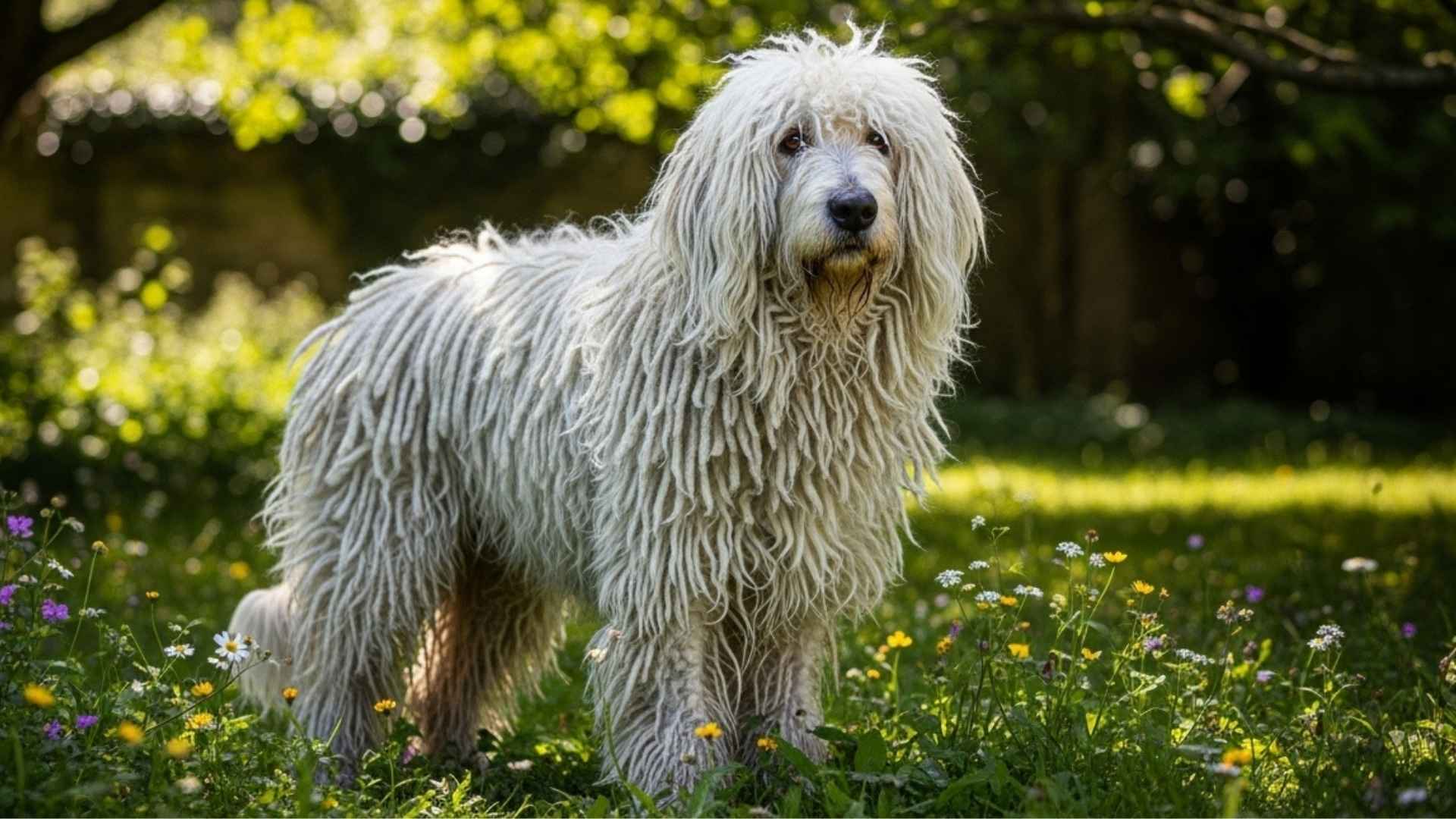Have you ever fallen in love with a rare dog breed—only to realize later it needs more upkeep than a royal palace? Some dogs may look like the perfect Instagram companion, but behind those soulful eyes and glossy coats lie grooming schedules, dietary needs, and energy levels that can turn pet ownership into a full-time job.
Rare breeds often come with unique quirks and challenges that make them fascinating yet demanding. From endless brushing sessions to specialized diets and stubborn temperaments, these pups require dedication far beyond the average daily walk.
Before you get swept away by their exotic appeal, it’s worth knowing which breeds might test your patience—and your wallet. We’ll explore some rare and not-so-low-maintenance dog breeds.
Let’s uncover which rare beauties are best left to expert dog owners and why some breeds, while stunning, just aren’t meant for the faint-hearted.
Did You Know? Some rare breeds, like the Komondor, require up to 3 hours of grooming per week! Their unique coats can trap dirt and moisture if not properly cared for — beauty comes with effort.
Rare Dog Breeds To Avoid If You Can’t Handle High Maintenance
1. Komondor
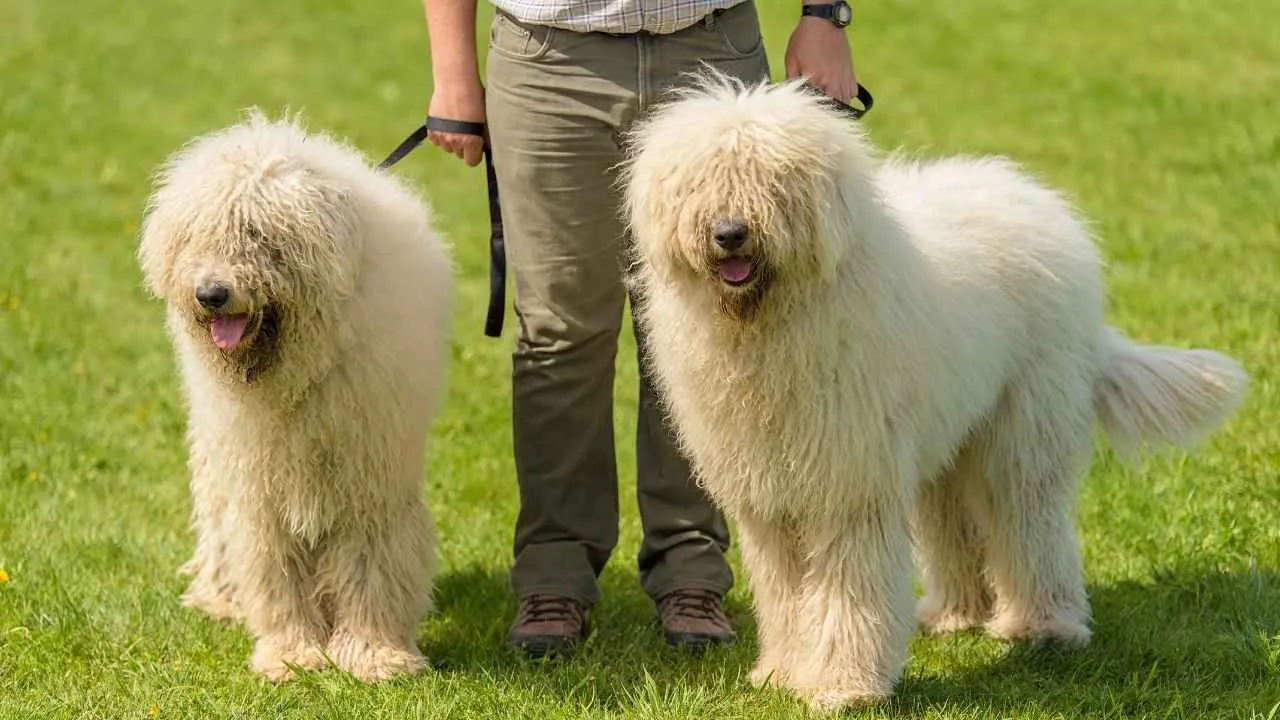
If you’ve ever dreamed of owning a dog that doubles as a living mop, meet the Komondor — a majestic Hungarian guardian that looks like it just wandered out of a farmhouse and into a reggae concert. Those long, rope-like cords aren’t just a quirky fashion choice; they’re a natural armor.
Originally bred to guard livestock from wolves and thieves on the plains of Hungary, the Komondor’s dense coat protected it from harsh weather and made it blend in with the flock. Think of it as a 100-pound sheep in disguise—with a security system built in.
But here’s the catch: that epic coat requires a serious grooming commitment. Each cord must be separated by hand to prevent matting, and washing one is like laundering an entire shag carpet.
Komondors are loyal, watchful, and independent thinkers. They don’t bark without reason, but when they do, it’s because they’ve detected something unusual—like a leaf blowing across the yard. Their protective instincts are unmatched, which makes them wonderful guardians but occasionally suspicious of strangers.
If you’re looking for a low-maintenance companion, this isn’t your breed. But if you have patience, space, and a good sense of humor about finding bits of nature tangled in your dog’s fur, the Komondor will reward you with devotion and a presence that commands both respect and smiles.
2. Polish Lowland Sheepdog
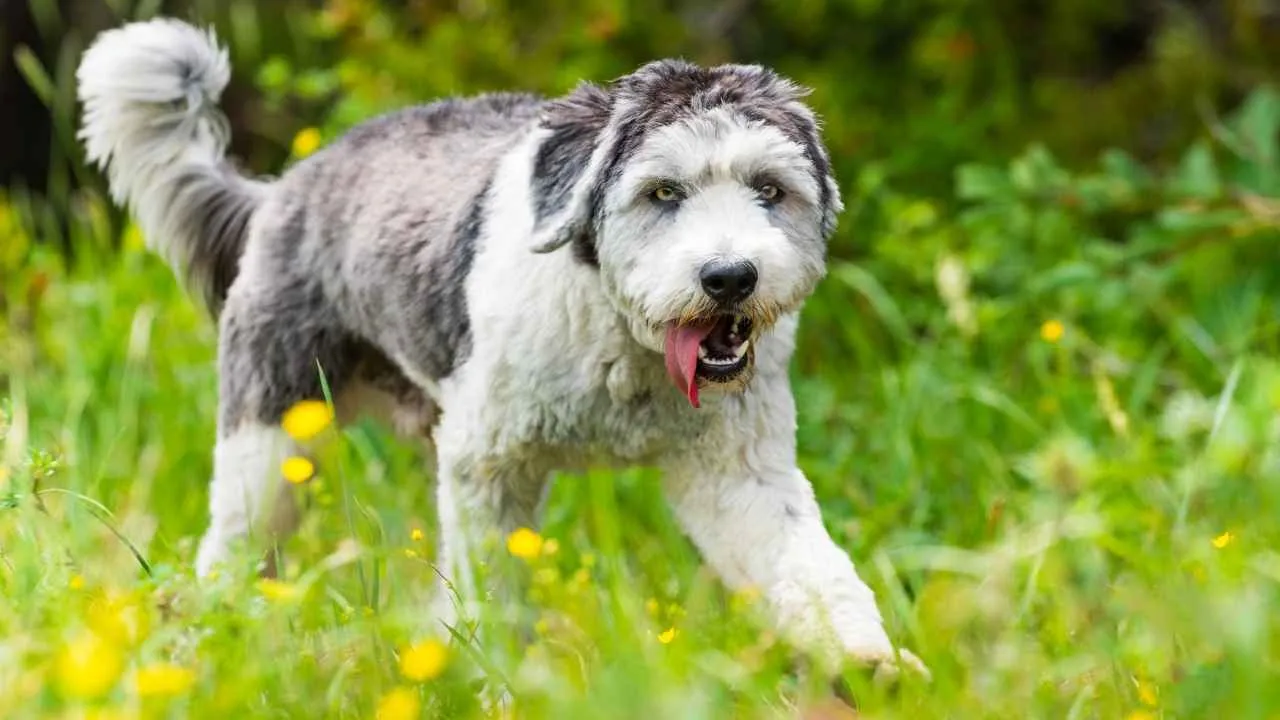
Meet the Polish Lowland Sheepdog, affectionately known as the PON (short for Polski Owczarek Nizinny — try saying that three times fast). This cheerful, shaggy herder from Poland is the definition of brains wrapped in fluff.
Don’t be fooled by their teddy bear appearance — the PON is no pushover. They’re energetic, strong-willed, and far too clever for anyone who expects an easygoing lapdog.
If you don’t keep their mind and body busy, they’ll find their own “projects” — which could involve redecorating your living room with couch stuffing or reorganizing your shoe collection.
Despite their woolly looks, Polish Lowland Sheepdogs don’t shed as much as you’d expect and rarely drool. However, their thick double coat does need regular brushing to stay mat-free (and to keep them from looking like a walking dust bunny).
They also love to bark — sometimes to warn you about danger, and sometimes just to let you know a leaf dared to move outside, says WebMD.
Health-wise, PONs are generally robust, though, like many purebred dogs, they can be prone to hip dysplasia or certain eye conditions. A good breeder and regular vet care go a long way in keeping them happy and healthy.
If you love long walks, mental challenges, and a dog with enough personality to keep you on your toes, the PON could be your dream companion. But if you’re hoping for a quiet, low-energy cuddle buddy… You might want to keep scrolling.
3. Tibetan Mastiff

Originally bred in the rugged heights of Tibet to guard nomadic herders and monasteries, this ancient breed wasn’t just a pet — it was a protector, a symbol of strength, and sometimes even a spiritual companion.
Fast forward a few centuries, and the Tibetan Mastiff has traded the Himalayan wilderness for manicured lawns and heated homes — but don’t be fooled, that guardian spirit hasn’t gone anywhere.
Beneath the lion-like mane and statuesque posture beats the heart of a loyal, affectionate family member who takes their job as “protector of the realm” very seriously. Despite their colossal size and commanding presence, Tibetan Mastiffs aren’t aggressive by nature.

They’re calm, thoughtful, and surprisingly gentle with their families — a bit like a giant teddy bear who’s also part philosopher. But when strangers show up uninvited? Expect the full “royal security detail” to activate. Their deep, thunderous bark alone could make a delivery driver reconsider a career change.
They’re not overly playful or clingy — think more “wise old guardian” than “energetic goofball.” This reserved nature can come off as aloof, but it’s really just discernment: they prefer to form deep, meaningful bonds rather than spread their affection around like confetti.
And yes, these large dogs are also among the most expensive dogs in the world, with some fetching prices that could rival a small car. But owning one isn’t about status — it’s about having the patience, space, and respect to live alongside a creature that’s as ancient as the mountains themselves.
4. Azawakh
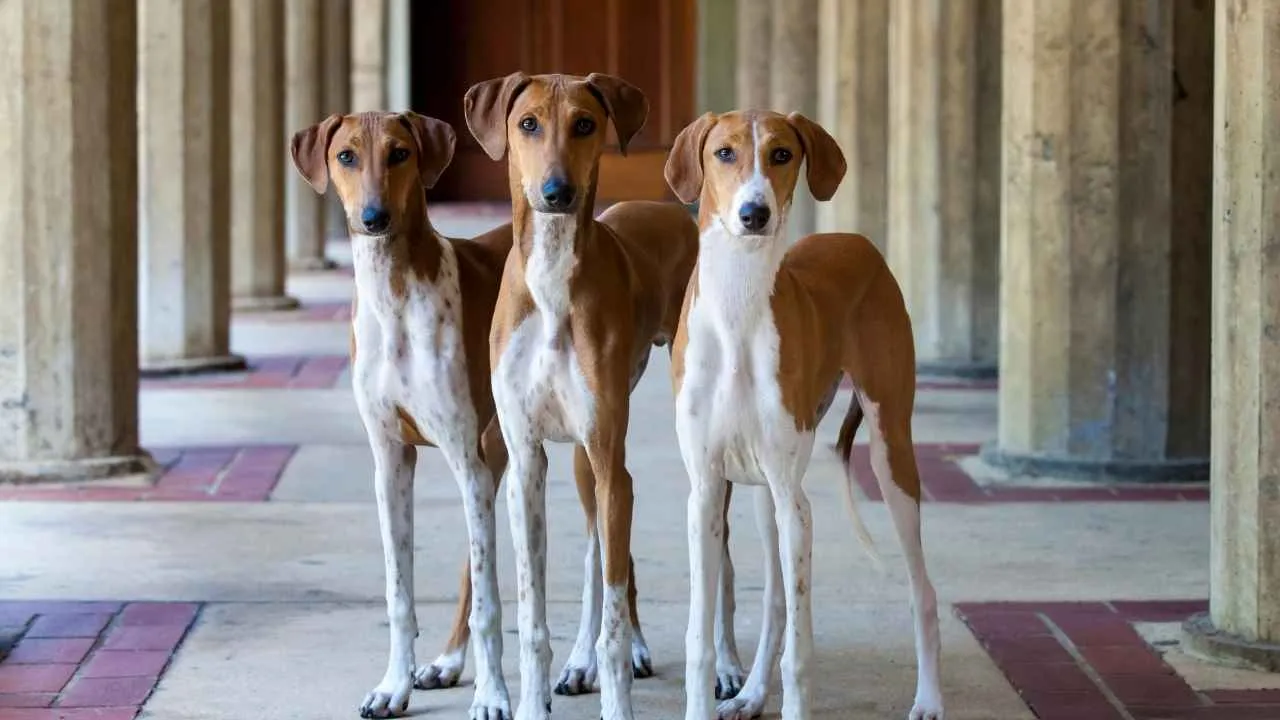
Azawakh — tall, slender, and sculpted as if by the desert winds themselves. Hailing from the scorching sands of the Sahara, this ancient sighthound was bred by nomadic tribes to guard camps and chase down gazelles with breathtaking speed and grace.
Imagine a creature that runs like poetry in motion — and then imagine trying to keep up. Spoiler: you won’t. The Azawakh isn’t just fast — it’s a blur of beauty and determination.
According to the American Kennel Club (AKC), built for endurance, these dogs can sprint with gazelle-like agility over the harshest terrain, surviving where most creatures would wave the white flag. Their lean, athletic bodies and long legs give them a regal, almost statuesque appearance — they look like they belong in a museum of fine art rather than a backyard.
But don’t mistake that refinement for fragility. Beneath the elegant frame is a fiercely loyal guardian and a surprisingly tough soul. Traditionally, the Azawakh lived side-by-side with their human families, protecting them from intruders and wild predators.
They form deep emotional bonds with their people and are often wary of strangers — think “reserved diplomat” rather than “overenthusiastic greeter.”
In modern homes, Azawakhs are calm and affectionate once they trust you, but they need plenty of space to stretch those long legs and an outlet for their incredible energy. Apartment life? Probably not ideal — unless your living room is the size of a soccer field.
Just be prepared: this dog isn’t here to impress everyone. They’ll love you fiercely, ignore your guests politely, and run faster than your Wi-Fi signal.
5. Puli

If you’ve ever seen a mop suddenly come to life and start herding sheep, you’ve probably just met a Puli. This Hungarian herding dog is famous for its spectacular corded coat — long, rope-like locks that swing dramatically as it runs, making it look like a fast-moving floor cleaner with attitude.
But behind that mop-like façade lies one of the most energetic and intelligent working dogs you’ll ever meet. The Puli’s coat isn’t a fashion statement; it’s a masterpiece of function and tradition. Those natural cords protected them from harsh weather and predators while working in the Hungarian plains.
Beyond the dreadlocks, the Puli is a compact powerhouse of energy and enthusiasm. They’re playful, loyal, and always on alert — the kind of dog who takes “watchdog duty” as seriously as a royal guard.
They need plenty of physical and mental stimulation; a bored Puli will happily invent its own games, which could include rearranging your furniture or organizing a “sheep roundup” with the neighborhood cats.
In return, they’ll give you endless affection, laughter, and a daily reminder that intelligence and joy often come wrapped in the most unexpected (and fluffiest) package.
6. Bedlington Terrier

At first glance, the Bedlington Terrier looks like it wandered straight out of a storybook — a gentle, lamb-like creature with soft, curly fur and a sweet expression. But don’t be fooled by appearances: beneath that innocent, powder-puff exterior beats the heart of a bold little warrior.
Named after the mining town of Bedlington in Northumberland, England, this breed was originally bred for hunting vermin in the mines and fields. With speed from its Whippet ancestry and grit from its Terrier roots, the Bedlington could chase down rabbits, bolt foxes, and hold its own against much larger opponents.
Despite their delicate looks, Bedlingtons are athletic, agile, and packed with personality. They’re famous for their “machine-gun bark,” which can startle unsuspecting guests and echo through your house like a security alarm on legs.
They love to run, leap, and swim — yes, swim — with a surprising grace that could make even a Labrador jealous. In fact, their swimming speed reportedly rivals that of the mighty Newfoundland.
But don’t worry, they have a softer side too. Bedlington Terriers are affectionate and loyal companions who love their families dearly — they’ll happily curl up on your lap after they’ve spent the day proving they can outrun your car. Still, their fiery terrier spirit means they need structure, exercise, and an owner who can handle a little attitude with their affection.
In short: the Bedlington Terrier is a charming contradiction — as elegant as a lamb, as fierce as a fox, and as fast as a Whippet on espresso. Handle with love, humor, and maybe a good pair of running shoes.
7. Saluki
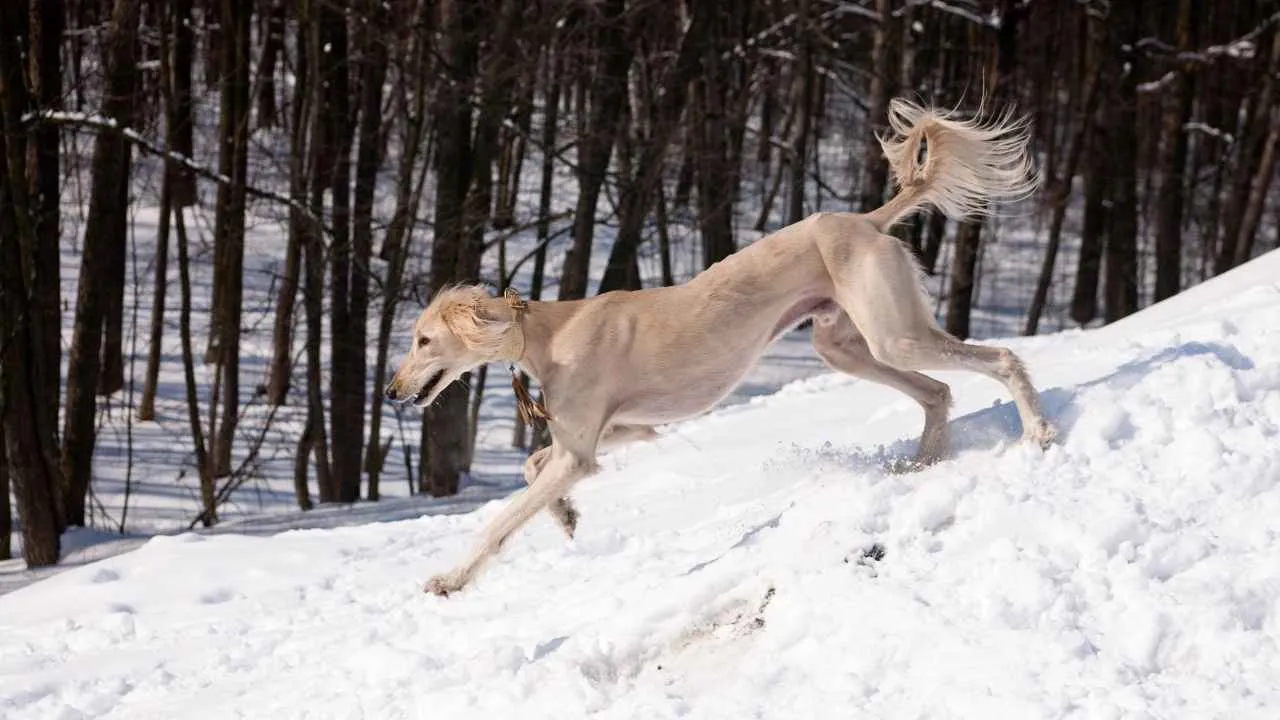
This ancient sighthound, often called the “Royal Dog of Egypt,” has roots stretching back thousands of years. You’ll even find their graceful forms etched into Egyptian tombs, proving that long before social media, the Saluki already had a fan base.
Originally bred by nomadic tribes of the Middle East, Salukis were prized hunters, chasing down gazelles across endless desert sands.
Their combination of lightning speed, endurance, and almost feline grace made them indispensable companions in a landscape where survival required both beauty and brawn. Even today, a Saluki in motion is something to behold — they don’t just run; they float, as if the ground is lucky to touch them.
But owning a Saluki isn’t like having a typical dog — it’s more like having a refined guest who occasionally decides to sprint at 40 mph for fun. They’re independent thinkers, sometimes aloof, and not overly eager to please (translation: obedience training requires patience and perhaps a sense of humor).
They adore their humans deeply, but they prefer affection on their own terms — think “royalty accepting tribute” rather than “clingy companion.”
Salukis are also surprisingly gentle and sensitive. They bond closely with their families, do best in calm households, and tend to be reserved around strangers. They’re not big barkers, but they are big runners — and with their sighthound instincts, if something small and fast moves, the chase is on. A securely fenced yard isn’t optional; it’s essential.
With their silky coats, soulful eyes, and dignified demeanor, Salukis are as breathtaking as they are demanding. They’re not a breed for chaos, nor for couch potatoes — but for those who appreciate ancient grace wrapped in modern devotion, the Saluki is living art with a heartbeat.
Conclusion
When considering rare dog breeds, it’s important to research and educate yourself on their maintenance requirements, including regular grooming, exercise, physical stimulation, and mental stimulation. Breeds like Afghan Hounds, Border Collies, Akitas, or Poodles may not be the best choice for new dog owners, as they can develop destructive behaviors, separation anxiety, or infections if needs aren’t properly managed. Even short-haired dogs can shed, and hair or allergies might challenge some households.
High-maintenance dog breeds demand attention, money, and commitment, and they can be challenging to train. While they can become a loyal friend to humans, low-maintenance companions are easier to live with. If you’re not ready to continue investing time, energy, and care, it’s wise to avoid these rare breeds and consider options that truly exist to fit a calmer, low-maintenance lifestyle—helping both you and the planet of happy dogs.


